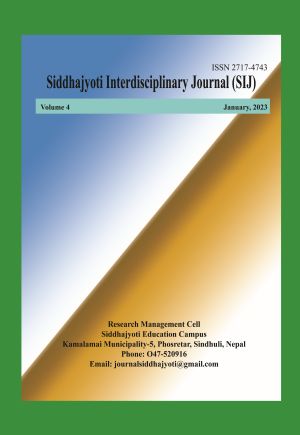Interpreting Linguistic Landscape Materials as a Part of Multilingual Education
DOI:
https://doi.org/10.3126/sij.v4i1.54133Keywords:
landscape materials, multilingual context, pedagogy, public schools, visual methodAbstract
Landscape materials are the tools for teaching languages and developing awareness to the teachers and students in a linguistically heterogeneous society. Multilingual landscapes can stimulate linguistic and metalinguistic talk about existence of multiple languages in the society among multilingual learners. Pokhara is a highly heterogeneous city with high probability of language diversity, where multilingualism is presented in different stimulated landscapes and discourses which provide resources of linguistic diversity on language learners and teachers. Qualitative visual interpretations of linguistic and nonlinguistic landscapes have been drawn from secondary level public school teachers as an intact cultural group considering the norms of ethnographic design. The findings are that the landscape materials are highly appreciable materials in language teaching in connection to business, local histories and cultures of the people with different linguistic backgrounds in a fragmented society. Awareness about languages in public spaces is indeed retrievable through the interpretations of monolingual and multilingual landscape materials. However, non-text based or non-lingual landscape materials are also helpful in cognitive and linguistic development and for cultural awareness among language learners and teachers.
Downloads
Downloads
Published
How to Cite
Issue
Section
License
© Siddhajyoti Education Campus, Phosretar, Sindhuli

